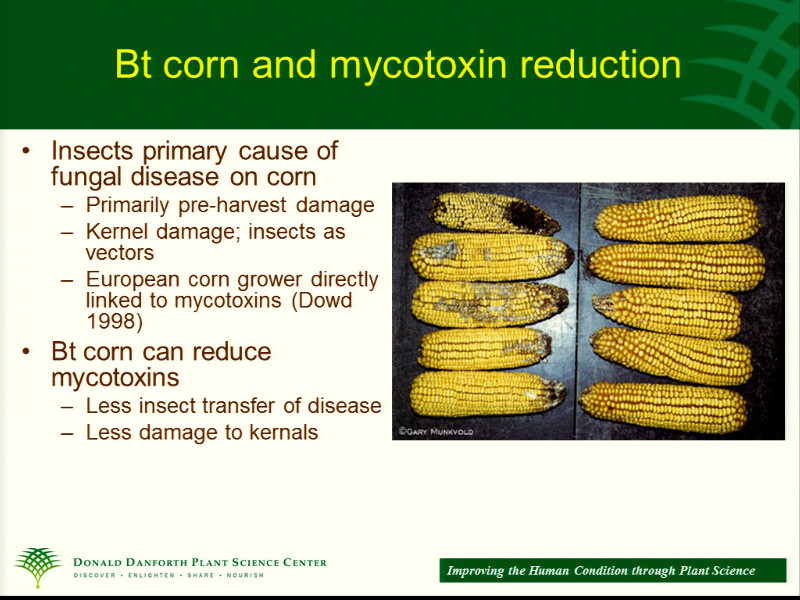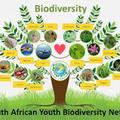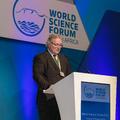World Science Forum 2011. - Day 2/7. Brazil / Sustainable Food Production / Fenntartható élelmiszerelőállítás
17:00-19:00 18 November - Parallel Thematic Session III. Brazil - Sustainable Food Production
Chaired by: Jacob Palis, Elibio Rech
Securing global food safety and fair trade 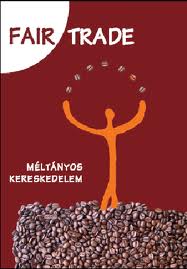
Food should be wholesome, nutritious and delicious, is a critical element for our lives and can bring happiness to a person, to family and to the population.
Producing and eating safe food is a basic recognition among all of us. However, as a reality, hazards that are contained in or attached to foods are taking away our health or even lives every day in the world. According to the estimates by World Health Organization (WHO), foodborne and waterborne diarrhoeal diseases are causing about 2.2 million deaths annually, 1.9 million of them are children. In addition to young children, elderly and the immunocompromised people, and those under mal-nutritious conditions are at risk for foodborne diseases, which is a growing public health concern in the world.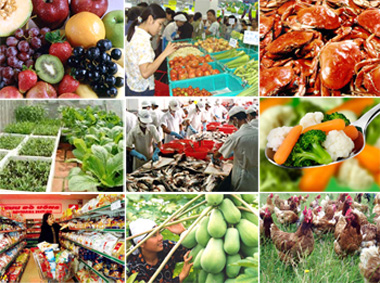
Various fields of science have been developing theories and technologies to overcome this situation, and multi-dimensional approaches for food safety have been taken at the regulation and industry levels based on science. Good Agricultural Practices (GAP) identifies safe practices at farming level. Important information of possible hazards at the production stage of foods is shared among relevant international organizations; e.g. Food and Agriculture Organization of the United Nations (FAO), WHO and World Organization for Animal Health (OIE) are working closely on avian influenza and other zoonotic diseases. Modern technologies of food production enable industry to efficiently kill harmful microbes, and to store and transport foods for long time and for long distance without loosing their quality and safety. More integrated food safety management is Hazard Analysis and Critical Control Point (HACCP) system. Its concept is to control whole processes from the receipt of the ingredients to the shipment of the final products, by identifying critical control points and the control limits, and not to rely on the end product testing.
Recently, science has more focused on risk, the impact on consumers’ health as the result of food consumption. Large outbreaks of foodborne disease draw media attention and raise consumer concern. However, as the cases of foodborne illness occurring daily are not always reported, the true size of the problem is usually unknown. Progresses of epidemiology can help understand the real public health problems, which can be used as the foundation of every further policy decision.
 World Trade Organization (WTO), through its agreement on plant/animal and human health, has encouraged member states to conduct risk assessment based on sound science. Codex Alimentarius Commission (Codex), an inter-government organization for establishing food standards, has developed guidelines for risk assessment of foodborne hazards, which can also provide effectiveness assessments on possible control measures. The aim of Codex is to protect both consumers’ health and fair trade of foods. By conducting risk assessment, equivalence between different measures in different countries and regions can be evaluated. Risk-based framework for food safety can protect both health of domestic people and the food industry in the country, which will in the end promote sustainable food production.
World Trade Organization (WTO), through its agreement on plant/animal and human health, has encouraged member states to conduct risk assessment based on sound science. Codex Alimentarius Commission (Codex), an inter-government organization for establishing food standards, has developed guidelines for risk assessment of foodborne hazards, which can also provide effectiveness assessments on possible control measures. The aim of Codex is to protect both consumers’ health and fair trade of foods. By conducting risk assessment, equivalence between different measures in different countries and regions can be evaluated. Risk-based framework for food safety can protect both health of domestic people and the food industry in the country, which will in the end promote sustainable food production.
Roger N. Beachy, Wolf Prize Laureate, Former Director, National Institute of Food and Agriculture, US

President Emeritus, Donald Danforth Plant Science Center
Dr. Roger Beachy was appointed by President Obama as the first Director of the National Institute of Food and Agriculture (NIFA) in October 2009 serving through May 2011. He served as Chief Scientist of USDA from January – October 2010. NIFA is responsible for awarding extramural funds for research, education and extension for the U.S. Department of Agriculture. Prior to this appointment, he served as the Founding President of the Danforth Center and served in this position from 1999-2009. Dr. Beachy, a member of the National Academy of Sciences, is recognized for his research on plant virology and molecular biology and for developing virus-resistant plants through biotechnology.
From 1991 to 1998, Dr. Beachy headed the Division of Plant Biology at The Scripps Research Institute, a leading biomedical research center in La Jolla, California. He was also Professor and Scripps Family Chair in Cell Biology and Co-Director of the International Laboratory for Tropical Agricultural Biotechnology (ILTAB) at Scripps.
Dr. Beachy was a member of the Biology Department at Washington University in St. Louis from 1978 to 1991, where he was Professor and Director of the Center for Plant Science and Biotechnology. In collaboration with Monsanto Company, Beachy's team led to the development of the world's first genetically modified food crop, a variety of tomato that was modified for resistance to virus disease. His technique to produce virus resistance by 'pathogen derived resistance' has been replicated by researchers around the world and yielded many types of plants with resistance to a number of different virus diseases. Research under his direction has led to a number of patents and has been described in 50 book articles and more than 240 journal publications.
Dr. Beachy has received a number of honors for his research. He is a member of the U.S. National Academy of Sciences and in 2001 received the Wolf Prize in Agriculture. He is a Foreign Associate in the National Academy of Sciences India, Indian National Science Academy, and the Third World Academy of Science. He is Fellow of the American Association for the Advancement of Science, the American Academy of Microbiology, and the Academy of Science of St. Louis. Dr. Beachy was awarded the Dennis Robert Hoagland Award from the American Society of Plant Biologists, the 1990 recipient of the American Phytopathological Society's Ruth Allen Award, the Peter Raven Lifetime Achievement Award, and an honorary Doctor of Science degree from Michigan State University. He was the 1991 recipient of the Bank of Delaware's Commonwealth Award for Science and Industry. In 1999, Dr. Beachy was named R&D Magazine's Scientist of the Year; and in 1995, the San Diego Press Club recognized him with a Headliner of the Year Award.
Dr. Beachy has served as editor of several scientific journals and has served on numerous boards and committees; he is currently a member of the Grand Challenges in International Development Committee (NAS; sponsored by USAID) and is an advisor to the Editorial Board of EMBO Reports. He is a member of a number of scientific societies, including the American Society of Plant Biologists, American Phytopathological Society, the American Society for Virology, and the American Association for the Advancement of Science. He has served as consultant in plant biotechnology and frequently lectures on the applications of biotechnology in agriculture.
Dr. Beachy holds a Ph.D. in Plant Pathology from Michigan State University and earned a B.A. in Biology from Goshen College in Goshen, Indiana.
Interview with Roger N. Beachy
World Science Forum 2011 slides:
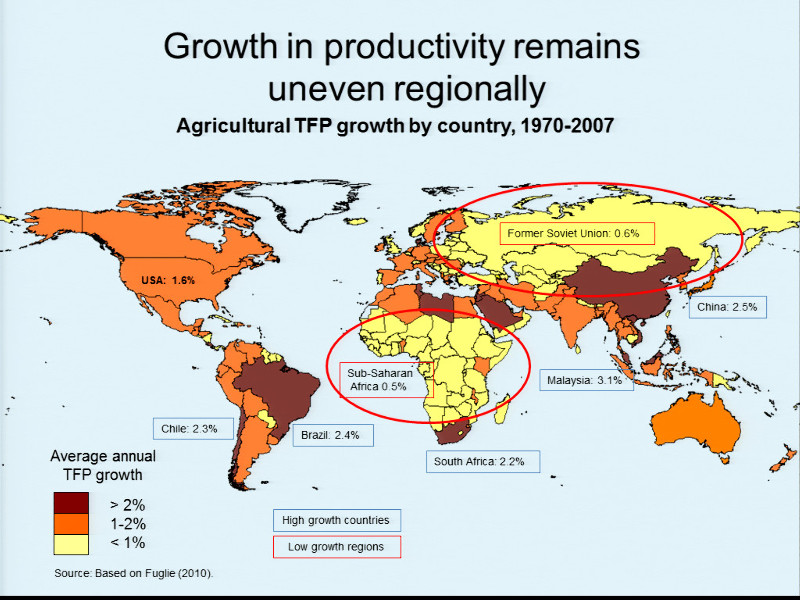
Paul Christou - University of Leida, Spain
 ICREA Research Professor at UdL (Universitat de Lleida). Life & Medical Sciences
ICREA Research Professor at UdL (Universitat de Lleida). Life & Medical Sciences
Received BS degree in Chemistry and PhD in plant biochemistry from University College London. Worked as senior scientist at Agracetus Inc. Madison WI USA. Subsequently head of Molecular Biotechnology Unit, John Innes Centre, Norwich UK and then head of Crop Genetics and Biotechnology Department at the Fraunhofer Institute for Molecular Biotechnology and Applied Ecology, Aachen/Schmallenberg, Germany. Currently at Universitat de Lleida as an ICREA Research Professor and head of the Applied Plant Biotechnology Laboratory.
Research interests: For the past several years we have been investigating the organization of foreign genes in important crops such as maize, rice and wheat and its impact on transgene expression levels and stability.
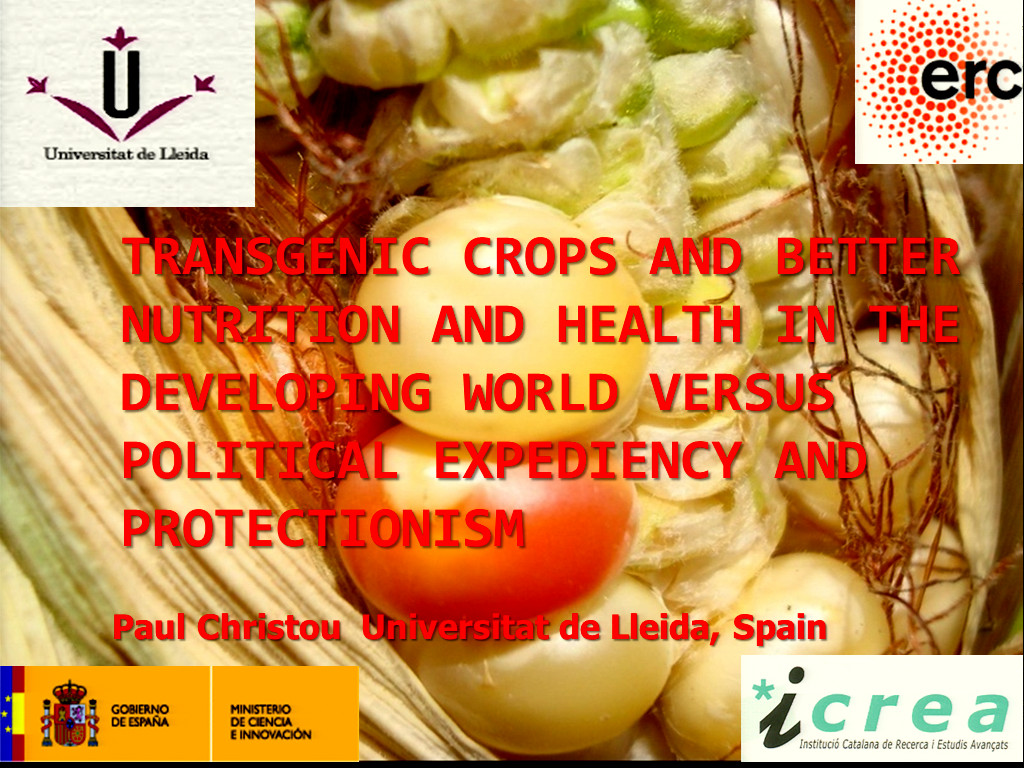 Applied aspects of our research include production of high value recombinant pharmaceuticals (vaccines and antibodies) in plants for use in human health and veterinary medicine; engineering crop plants for enhanced nutrition and novel strategies of sustainable and environmentally friendly agriculture using transgenic approaches, all with emphasis on developing countries, poverty alleviation and food security. Our group is heavily involved in training and capacity building in the area of plant biotechnology focusing on developing countries.
Applied aspects of our research include production of high value recombinant pharmaceuticals (vaccines and antibodies) in plants for use in human health and veterinary medicine; engineering crop plants for enhanced nutrition and novel strategies of sustainable and environmentally friendly agriculture using transgenic approaches, all with emphasis on developing countries, poverty alleviation and food security. Our group is heavily involved in training and capacity building in the area of plant biotechnology focusing on developing countries.
Thorsten Storck, BASF Plant Science Company, Germany
Over the last six years Thorsten Storck has been heading the development of genetically optimized potatoes at BASF Plant Science, BASF’s plant biotechnology arm. The EU approval of the starch potato “Amflora” in 2010 marked a major milestone for the whole green biotechnology sector, being the first approval for commercial cultivation of a genetically modified crop within the EU in more than a decade.
Before engaging with green biotechnology he worked in the red biotechnology sector for over eight years. Dr. Storck served in leading positions in companies in Heidelberg and in the San Francisco Bay Area at the forefront of developing and applying functional genomics to the discovery and development of new pharmaceuticals.
Dr. Storck received his Ph.D. at the University of Cologne and studied molecular neuroscience in Cologne and Heidelberg. With the first cloning and characterization of a glutamate neurotransmitter transporter he contributed to our understanding of brain function at the molecular level.
World Science Forum 2011 abstract - Precious Spuds – Tapping the Full Potential of Potatoes
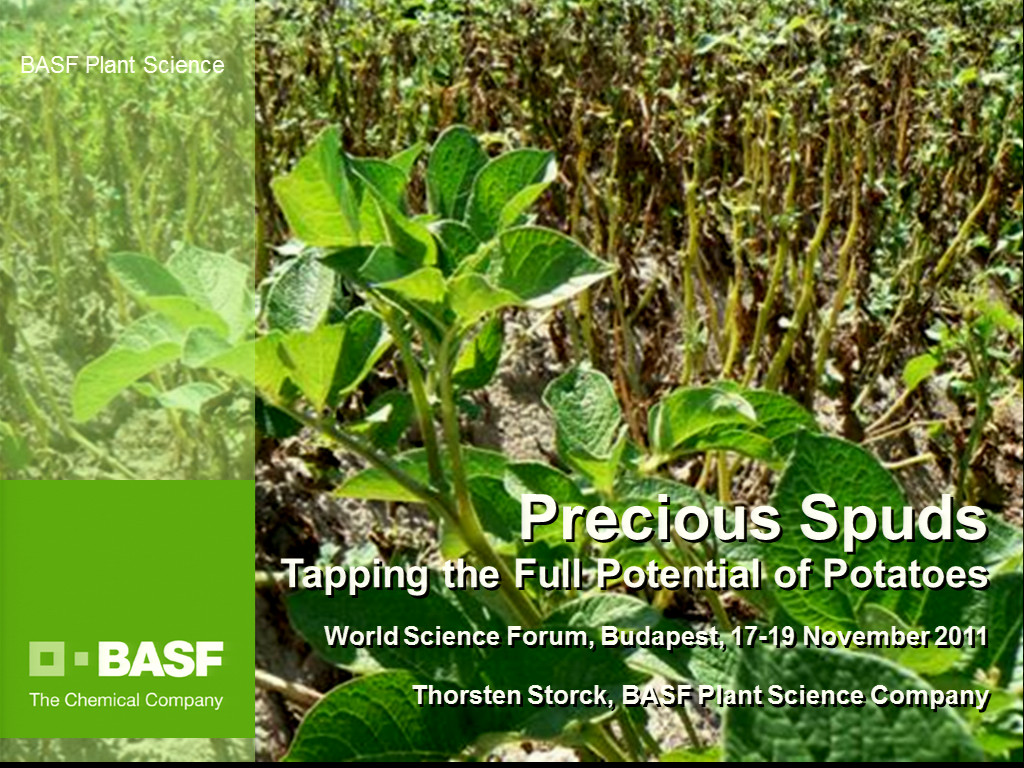 With a global production of over 300 million tons potatoes are the third most important food crop. They are a valuable resource for human nutrition and for the production of starch as a renewable raw material. Since potatoes produce by far more food per unit of land and per unit of water than any other major crop, it is likely that their role will further increase along with the challenge to feed the growing world population.
With a global production of over 300 million tons potatoes are the third most important food crop. They are a valuable resource for human nutrition and for the production of starch as a renewable raw material. Since potatoes produce by far more food per unit of land and per unit of water than any other major crop, it is likely that their role will further increase along with the challenge to feed the growing world population.
Late blight is the most devastating potato disease. It causes leaves and tubers to rot and is thereby able to destroy entire harvests. Its arrival in Europe in the mid 19th century caused the big Irish famine, which was followed by a massive emigration wave. Still today this disease is estimated to cause damage worth several billion Euros annually. Due to the aggressiveness of the disease, farmers have to apply fungicides up to 15 times per season, accounting for a significant part of the energy use in potato cultivation.
Several wild potato species are fully resistant to late blight. Breeders have been trying for more than 50 years to transfer this resistance to modern varieties. Up to now, however, classical breeding has been unable to deliver a potato variety which combines both, late blight resistance and the agronomic properties required in today’s agricultural practice.
Using plant biotechnology we have introduced two resistance genes of a wild potato into a modern potato variety. The resulting variety Fortuna is fully resistant to late blight while maintaining all the characteristics of its successful mother variety. Pending the EU approval we are hoping to be able to offer this solution to the farmers in the second half of this decade, contributing to increase the sustainability of potato production.
Potato starch is a renewable raw material used in a broad spectrum of technical processes, including the making of paper, textiles, and adhesives. It consists of two components. The highly branched amylopectin is an excellent thickener and binder, while the linear amylose tends to gel and thereby interferes with several processes. A separation of the two components, however, is economically not viable. In our starch potato Amflora the gene responsible for amylose synthesis has been turned down, rendering Amflora to produce pure amylopectin starch. In paper making Amflora starch increases paper strength and supports the reuse of recycled paper, thereby increasing the sustainability of the entire process.
Destined for cultivation in Europe, the potatoes Fortuna and Amflora are helping to bring the discussion on genetically modified crops from a rather theoretical level to a product based one. The EU approval of Amflora in 2010 marked a major milestone for the whole green biotechnology sector, being the first approval for commercial cultivation of a genetically modified crop within the EU in more than a decade.
Dionne Shepherd University of Cape Town, South Africa
Dr Dionne Shepherd holds a PhD in Molecular and Cell Biology (awarded 2003) and is currently a research scientist in the Department of Molecular and Cell Biology at the University of Cape Town, South Africa. She has published 28 peer-reviewed papers and holds the patent on the first all-African produced GMO. Her research focuses on the development of transgenic maize genotypes resistant to Maize streak virus (MSV), which causes maize streak disease – a disease that seriously threatens sustainable food production throughout Africa. Towards this end she has developed innovative systems for testing potential resistance genes and was the first to demonstrate that transgenic resistance to MSV is achievable. She is additionally working on the development of alternative transgenic-based strategies for combating maize streak and other viral diseases that affect important African food-crop species. These include gene silencing strategies and strictly virus-inducible resistance genes that will have no impact on food quality and safety. If successful these “next generation” transgenic resistance strategies will be combined within super-immune maize varieties that would be very unlikely to succumb to resistance-breaking mutant viruses. Dr Shepherd is additionally co-convenor of an extensive pan-African network of crop scientists and virologists that is carrying out the world’s largest ongoing plant pathogenic virus diversity studies. The focus of this collaborative group is the comparative analysis of maize streak disease transmission dynamics throughout Africa. With miniscule financial resources the group is successfully carrying out cutting-edge epidemiological research and has identified the predominant MSV genotypes that will confront MSV-resistant transgenics in different parts of the continent, has worked out the rates and pathways of virus spread throughout the continent and defined the specific regions within the continent that appear to be the cradles from which almost all new maize streak disease epidemics emerge. In 2008 Dr Shepherd was the recipient of the prestigious South African Department of Science and Technology’s Best Emerging Young Scientist award.
World Science Forum 2011. abstract - Importance of virus-resistant transgenic maize in Africa
Despite being Africa’s most important staple food crop, average African maize yields are less than a quarter of world averages. A major contributing factor to these low yields is virus infection. Although African maize is infected by several virus species from at least six different families, there are two that stand out as the greatest threat to African food security: these are Maize streak virus [MSV]; family Geminiviridae, a virus species with an extremely small single-stranded DNA genome that was first discovered infecting African maize over a century ago; and Maize rough dwarf virus [MRDV], family Reoviridae, a virus species with a complex double-stranded RNA genome that until recently was thought to occur only in Europe and Asia. In 2010, however, MRDV struck maize in Uganda, East Africa, causing panic among African maize farmers.
Although MRDV would be potentially devastating if it took hold and spread throughout Africa, MSV is without question currently the biggest viral disease problem that African maize farmers face. It is found only in Africa, and causes the devastating maize streak disease (MSD) that can wipe out a farmer’s entire crop. Considering that over 50% of calories in local diets come from maize, yield losses caused by MSV can result in food shortages and famine.
MSV is transmitted amongst maize and other weed host plants by small insects called leafhoppers. The disease is therefore a result of a complex interplay between the virus, annual variations in maize and wild plant species densities, insect movement and population growth-and-decline cycles. Traditional methods used to limit the impact of MSD include insecticides to control leafhopper populations (which are not affordable to most small-scale farmers and can be environmentally damaging), and conventional selective breeding of maize for resistance traits that naturally exist in some varieties. Attempts have been made for over 40 years to produce MSV-resistant maize in this way, but it is a difficult process and successes have been limited.
To circumvent these problems, we are developing MSV-resistant maize by genetic engineering. We have used three variations of a strategy known as pathogen-derived resistance (PDR), whereby fragments of DNA from the pathogen are inserted into the plant genome providing it with resistance against the pathogen. For the first PDR variation, a mutated form of the viral replication associated protein gene (rep), which is essential for viral replication, was used to transform maize. Transgenic plants producing high levels of the mutant Rep protein are resistant to the virus, due to the mutant Rep interfering with the function of the virus’ non-mutated Rep.
In the second PDR variation, plants were engineered to express a mutant Rep only when they became infected with the virus. This has the advantage that the plant will not waste precious resources by producing large quantities of the mutant Rep when it is not needed.
The third PDR approach and the one that we intend using not only for MSV resistance but also for other viruses such as MRDV, is based on something called RNA-mediated gene silencing. Gene silencing is a natural adaptive defense mechanism used by plants against viruses. We aim to develop novel silencing-based virus resistance genes for inclusion within transgenic maize genotypes. In other words, we aim to trigger the natural anti-virus defense system already present in maize, to prime it to attack the virus before the virus even enters the plant.
Fumiko Kasuga Vice President, Science Council of Japan

Vice-President in charge of International Affairs, Science Council of Japan
Dr. Fumiko Kasuga obtained her PhD from the University of Tokyo in 1988 and is Section Chief at National Institute of Health Sciences, Ministry of Health, Labour and Welfare of Japan.
Specialized in food safety as a doctor of veterinary medicine, particularly focusing on microbiological risk assessment of foodborne hazards and foodborne disease epidemiology, Dr. Kasuga has been dedicating herself to various aspects where “Science for Society” could bring the fruits of science to our society through science-based decisions by government, industry and consumers in the most beneficial way. Her zealous activities cover not only scientific researches, but also the international involvements through organizations such as FAO, WHO, ICMSF (The International Commission on Microbiological Specification for Food) and JICA (Japan International Cooperation Agency). Through these activities, she has been contributing to developing harmonized framework of food safety management in the world, considering both food safety and fair trade of foods and caring most vulnerable populations with insufficient nutrition and at risk of foodborne diseases.
World Science Forum 2011 abstract - Securing global food safety and fair trade
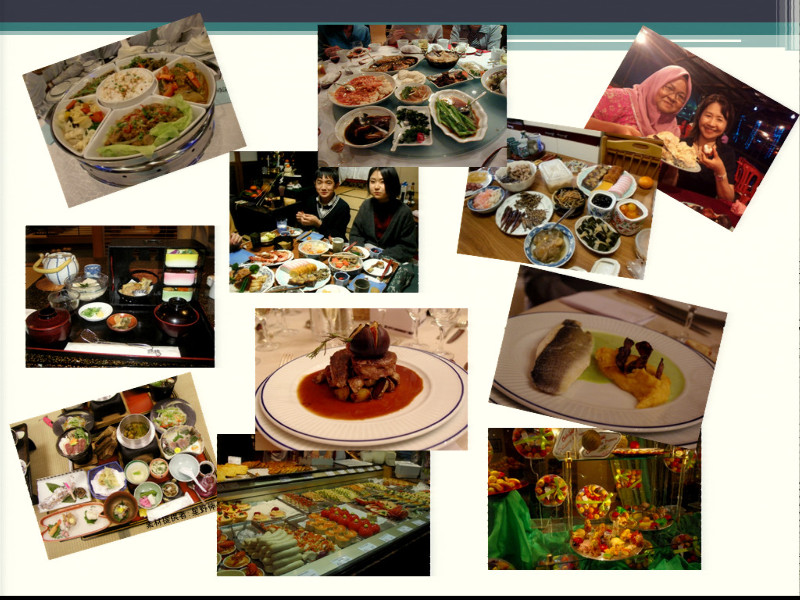 Food should be wholesome, nutritious and delicious, is a critical element for our lives and can bring happiness to a person, to family and to the population. Producing and eating safe food is a basic recognition among all of us. However, as a reality, hazards that are contained in or attached to foods are taking away our health or even lives every day in the world. According to the estimates by World Health Organization (WHO), foodborne and waterborne diarrhoeal diseases are causing about 2.2 million deaths annually, 1.9 million of them are children. In addition to young children, elderly and the immunocompromised people, and those under mal-nutritious conditions are at risk for foodborne diseases, which is a growing public health concern in the world.
Food should be wholesome, nutritious and delicious, is a critical element for our lives and can bring happiness to a person, to family and to the population. Producing and eating safe food is a basic recognition among all of us. However, as a reality, hazards that are contained in or attached to foods are taking away our health or even lives every day in the world. According to the estimates by World Health Organization (WHO), foodborne and waterborne diarrhoeal diseases are causing about 2.2 million deaths annually, 1.9 million of them are children. In addition to young children, elderly and the immunocompromised people, and those under mal-nutritious conditions are at risk for foodborne diseases, which is a growing public health concern in the world.
Various fields of science have been developing theories and technologies to overcome this situation, and multi-dimensional approaches for food safety have been taken at the regulation and industry levels based on science. Good Agricultural Practices (GAP) identifies safe practices at farming level. Important information of possible hazards at the production stage of foods is shared among relevant international organizations; e.g. Food and Agriculture Organization of the United Nations (FAO), WHO and World Organization for Animal Health (OIE) are working closely on avian influenza and other zoonotic diseases. Modern technologies of food production enable industry to efficiently kill harmful microbes, and to store and transport foods for long time and for long distance without loosing their quality and safety. More integrated food safety management is Hazard Analysis and Critical Control Point (HACCP) system. Its concept is to control whole processes from the receipt of the ingredients to the shipment of the final products, by identifying critical control points and the control limits, and not to rely on the end product testing.
Recently, science has more focused on risk, the impact on consumers’ health as the result of food consumption. Large outbreaks of foodborne disease draw media attention and raise consumer concern. However, as the cases of foodborne illness occurring daily are not always reported, the true size of the problem is usually unknown. Progresses of epidemiology can help understand the real public health problems, which can be used as the foundation of every further policy decision. World Trade Organization (WTO), through its agreement on plant/animal and human health, has encouraged member states to conduct risk assessment based on sound science. Codex Alimentarius Commission (Codex), an inter-government organization for establishing food standards, has developed guidelines for risk assessment of foodborne hazards, which can also provide effectiveness assessments on possible control measures. The aim of Codex is to protect both consumers’ health and fair trade of foods. By conducting risk assessment, equivalence between different measures in different countries and regions can be evaluated. Risk-based framework for food safety can protect both health of domestic people and the food industry in the country, which will in the end promote sustainable food production.
Elibio Rech, EMBRAPA Genetic Resources and Biotechnology, Brazil
Rech has been a scientist at EMBRAPA Recursos Geneticos e Biotecnologia, Brazil, since 1981. He obtained his PhD in 1989 at the University of Nottingham, England. He is recognized by his studies on the recombinant DNA technology and its application for development of processes and products with economic and social impacts. His work focuses on the molecular and biochemical mechanisms that govern several types of protein-conformational expression. His awards include: Prize Estado de Sao Paulo Governator; Embrapa Prize for Research Excellence; Commander of the Order of National Scientific Merit, Brazil; and Fellow of the Brazilian Academy of Sciences.
Elibio Rech research group began improving physical capability to direct introduce genetic information into a living cell and in vitro cell culture technologies to produce proteins for basic and applied research. His group has pioneered studies on understanding of the process of selecting germ line-transformed leguminous plants and have developed. He has also been studying evolutionary and structural modular engineering of spider genes and regulatory sequences prospected in brazilian biodiveristy, and producing synthetic spider silk fibers using recombinant DNA technology. His work currently focuses on the molecular and biochemical mechanisms that govern several types of protein-conformational expression and covers a broad range and the various projects have an intersection in recombinant DNA technology, synthetic biology and biodiversity. He is fellow member of the Brazilian Academy of Sciences and Academy of Sciences for the Developing World (TWAS).
World Science Forum 2011. abstract - Biotechnology and the sustainable use of biodiversity
There is a worldwide consensus that the production of food, biomolecules and bioenergy should be sustainably intensified within the next decades. Reaching these objectives will demand new research that will effectively and operationally integrate practices from thoroughly mastered agricultural systems and advanced research technologies in genomics, transgenics, microbiology, synthetic biology and metabolic engineering. It has been proposed that a global network should be established to monitor the effects of agriculture on the environment, across large agricultural, ecological and climatic zones worldwide. This would involve the interested parties – politicians, farmers, consumers, businesses, NGOs and teaching and research institutions – to jointly develop a set of measures to quantify social, economic and environmental results arising from a range of agricultural strategies. Recombinant DNA derived products will continue playing a key role as the foundation to intensify the sustainable production of food, biomolecules and bionergy and will also contribute to mitigating emissions of CO2 equivalent gases and their derived impacts on climate changes. In addition to the efforts made to conserve biodiversity, an effective, evidence-based method for estimating biodiversity value is necessary. The use of genomics to metabolomics, through seed metabolic engineering and synthetic biology may constitute an important tool and be a viable option for the prospection, evaluation and manipulation of biodiversity, as advocated, as well as be useful for developing methods for sustainable use and production of novel molecules. In this conference I will summarize some of the recent advances in the mentioned fields utilizing technologies and products developed in our own laboratory and discuss how to intensify the production of food and biomolecules.
John Ingram Environmental Change Institute Oxford University, UK

NERC Food Security Leader, Environmental Change Institute
Oxford University Centre for the Environment
Following a BSc in chemistry from King’s College, University of London (1979) and a MSc in soil chemistry from the University of Reading (1980), John Ingram gained extensive experience in the 1980s working in East and Southern Africa, and South Asia in agriculture, forestry and agroecology research projects. In 1991 he was recruited by the UK’s Natural Environment Research Council (NERC) to help organise, coordinate and synthesise research on global change and agroecology as part of International Geosphere-Biosphere Programme, launching and running a series of international research networks on crops, soils, and pests and diseases. In 2001 he was appointed Executive Officer for the Earth System Science Partnership’s Joint Project “Global Environmental Change and Food Systems” (GECAFS). On the close of GECAFS in 2011, he assumed a new role as ‘NERC Food Security Leader’.
John has had substantial interaction with a number of international organisations, especially the UN-FAO and the CGIAR and has worked closely with international and national departments, agencies and NGOs helping to establish region-wide research on the links between food security and environmental stress. Focal areas for his work have in the Indo-Gangetic Plains of south Asia, southern Africa, the Caribbean and Europe. He has published on a wide range of topics ranging from soil organic matter dynamics to food security issues. His recent activities have included promoting, coordinating and integrating international research related to the interactions between global environmental change and food security, as researched through analysis of food systems. Much of this work he brought together in his PhD thesis “From Food Production to Food Security: Developing interdisciplinary, regional-level research” (Wageningen University, NL: 2011).
John is based in the Environmental Change Institute, University of Oxford, UK.
World Science Forum 2011 abstract - Food Security and the value of taking a Regional Perspective
Food security is a condition whereby “all people, at all times, have physical and economic access to sufficient, safe, and nutritious food to meet their dietary needs and food preferences for an active and healthy life” (FAO World Food Summit, 1996). Globally, food production has kept ahead of demand for many years, yet about two billion people currently do not have such access. This is due to a combination of biophysical, socioeconomic and political factors. New research concepts, tools and methods are needed to understand, and improve governance of, the complex interactions between these factors if such food insecurity is to be overcome. This is especially the case at the regional (sub-continental) level where many stakeholder groups and actors are involved in setting policies and taking decisions that affect food security outcomes.
The ‘food system’ concept, which integrates an understanding of the activities of producing, distributing, trading and consuming food with the food security outcomes relating to access, availability and utilisation of food, provides a robust framework for food security analyses. An effective food security research agenda needs to not only encompass all these activities and outcomes, but also note the range of biophysical, socioeconomic and political food system drivers across and along spatial, temporal and jurisdictional scales. This is because food insecurity arises from vulnerability of the food system to combinations of stresses induced from changes in these drivers.
The ability to overcome these stresses, and thereby enhance food security, would be increased if policy and technical options were considered more specifically at regional level, in addition to at local and global levels. This is however challenging due to the diversity of stakeholder groups operating at this level (e.g. government and NGOs; researchers and research funders; and business and civil society) all of whom have their own motives and objectives. Further, there are numerous interactions with higher and lower levels on these scales, and insufficient knowledge and awareness of actions taken at these other levels often leads to ‘scale challenges’. Participatory research methods (e.g. surveys, consultations and scenario exercises) have been found in this research to help overcome these ‘scale challenges’.
Improved understanding of how food systems operate will help food security planning by identifying where, when and how vulnerability arises; and hence what sorts of adaptation interventions are needed, and where and when they would be most effective. Understanding can be enhanced by integrating concepts from production ecology, agroecology and human ecology with concepts of food systems and scales, to develop the notion of ‘food system ecology’.


